Noodles hold a special place in the traditional foods and cuisine in countries like China, Japan, Vietnam, and Korea. If you’re reading this right now, then you’re probably a bit confused with all of the different types of Asian-style noodles you’ve come across.
One of the biggest questions I get is, “Are udon noodles the same as rice noodles?”
No, udon noodles are not the same as rice noodles. The main difference between udon noodles and rice noodles is that udon noodles utilize whole wheat flour as the main ingredient, while rice noodles use rice flour as the main ingredient.
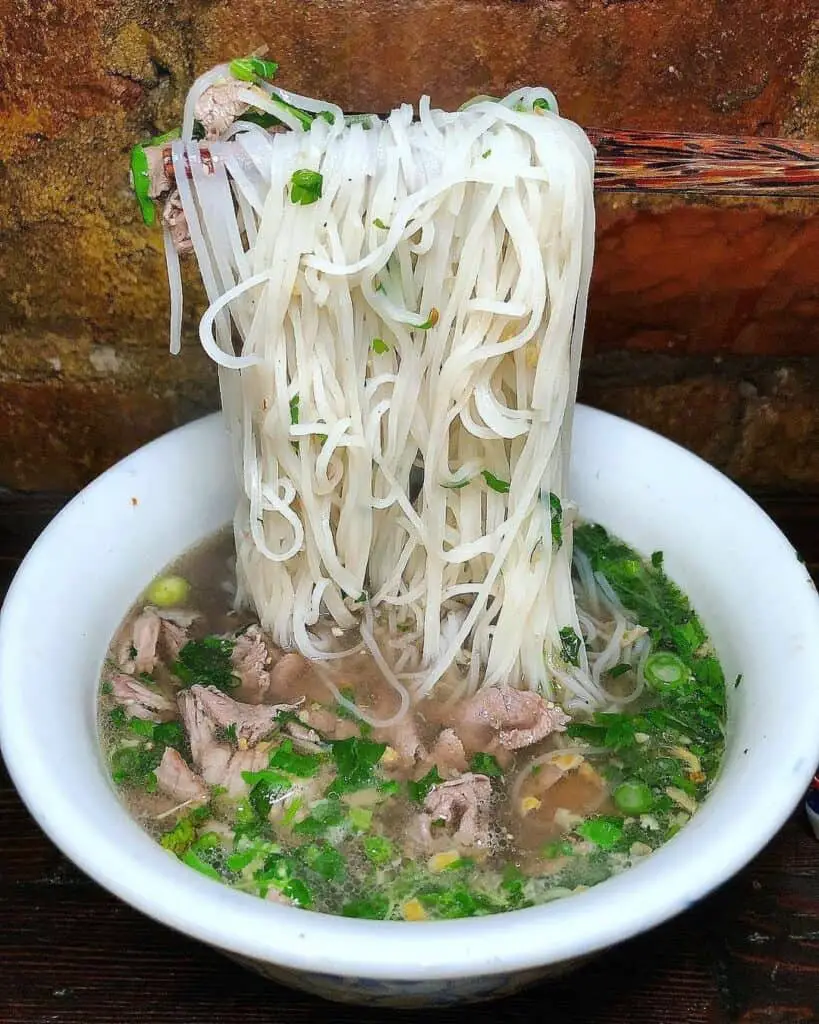

Aside from this, udon noodles also tend to be a bit thicker, whereas rice noodles are plant based and a bit thinner.
In today’s post, I’m going to be discussing some of the primary differences between udon and rice noodles, why it matters, and why some people prefer one type of noodle over the other.
Although both noodles are widely loved and acknowledged in Japanese and Vietnamese cuisine, their uses are somewhat different from one another.
The Difference Between Udon Noodles And Rice Noodles
Suppose you enjoy popular Asian dishes such as pho, sukiyaki, or ramen. In that case, you no doubt are familiar with the fact that Asian noodles are quite different from the type of noodles used by most Western and European worlds. While the Italians may have invented the traditional noodles you consume in popular pasta dishes, they’re different from the most commonly used noodles in Asian dishes.
The primary difference between the two types of noodles is, of course, the main ingredient used. Udon noodles almost always use whole wheat flour, while rice noodles use rice flour. That being said, you can find udon-style noodles made with rice flour if you look hard enough. Although they aren’t “official” udon noodles, they’re made with a similar thickness, texture, and flavor and designed for people who are trying to avoid wheat and other gluten-containing foods.
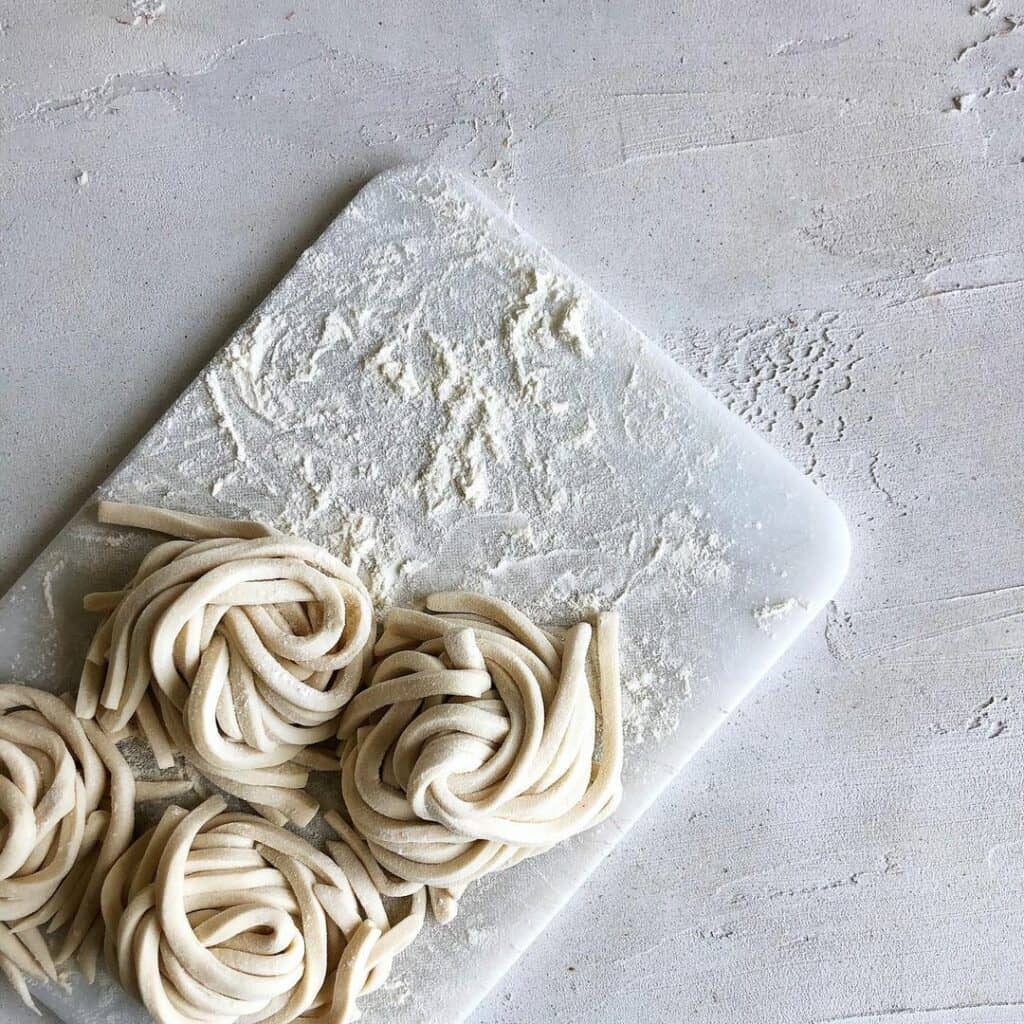
The second difference that’s worth mentioning here is the fact that the two noodles are traditionally used in two different countries.
Udon noodles are the most popular in Japan, where they’re commonly used with nabemono-style dishes. Nabemono translates literally to “stuff in a pot.” These dishes are usually brothy, soup-like dishes that feature pork or beef mixed with udon noodles and fresh seasonal vegetables and herbs. One of Japan’s most popular dishes that utilize udon noodles is sukiyaki, a beef stew with udon noodles that’s served with a side of raw egg that’s used as a dipping sauce.
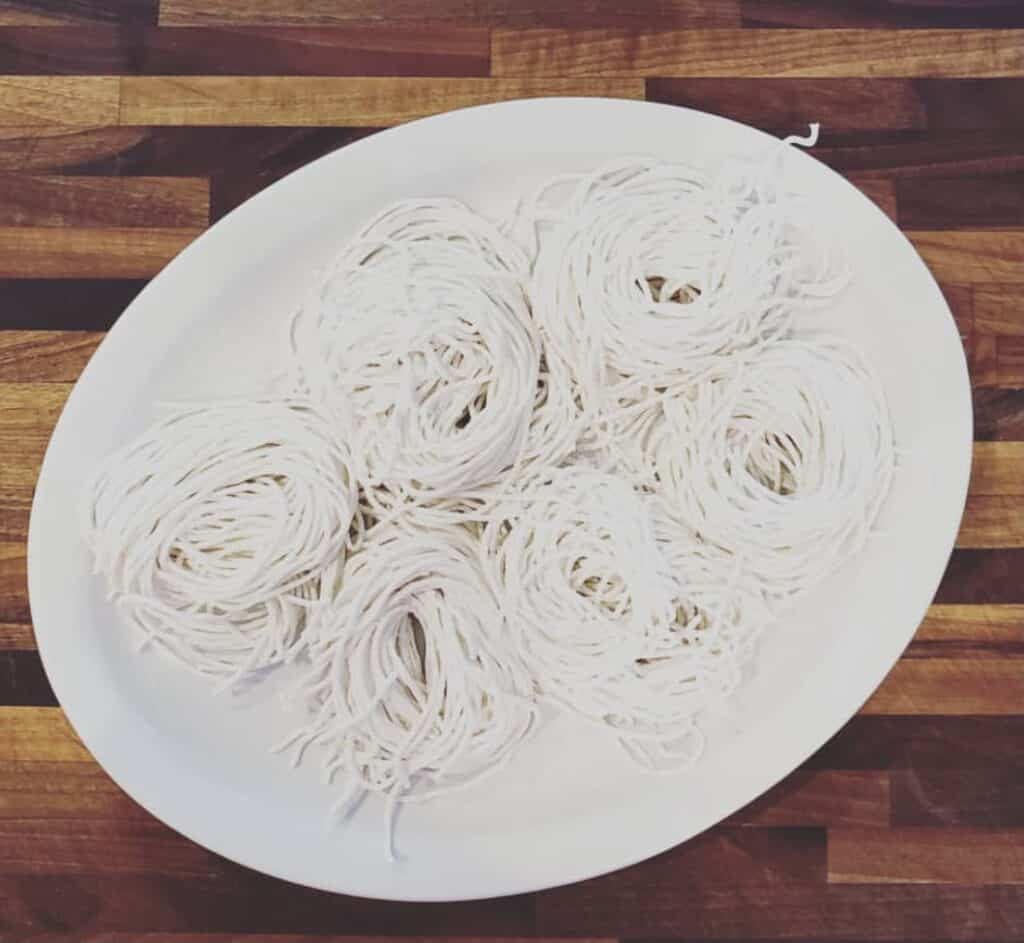
On the other hand, Rice noodles tend to be more prevalent in Vietnamese cuisine, where rice is one of its leading exports. Although rice noodles can be found in Japan (and most Asian countries, for that matter), they’re most commonly used for Vietnamese-style dishes such as pho or Bún Thịt Nướng.
Now that you know a little bit more about the main difference between the two noodles let’s discuss some of the more subtle differences that most people won’t realize unless they’re tasting the two types of noodles side by side.
Differences In Taste
For example, let’s just take sukiyaki (a popular Japanese udon noodle dish) and pho (a popular Vietnamese rice noodle dish) and compare them.
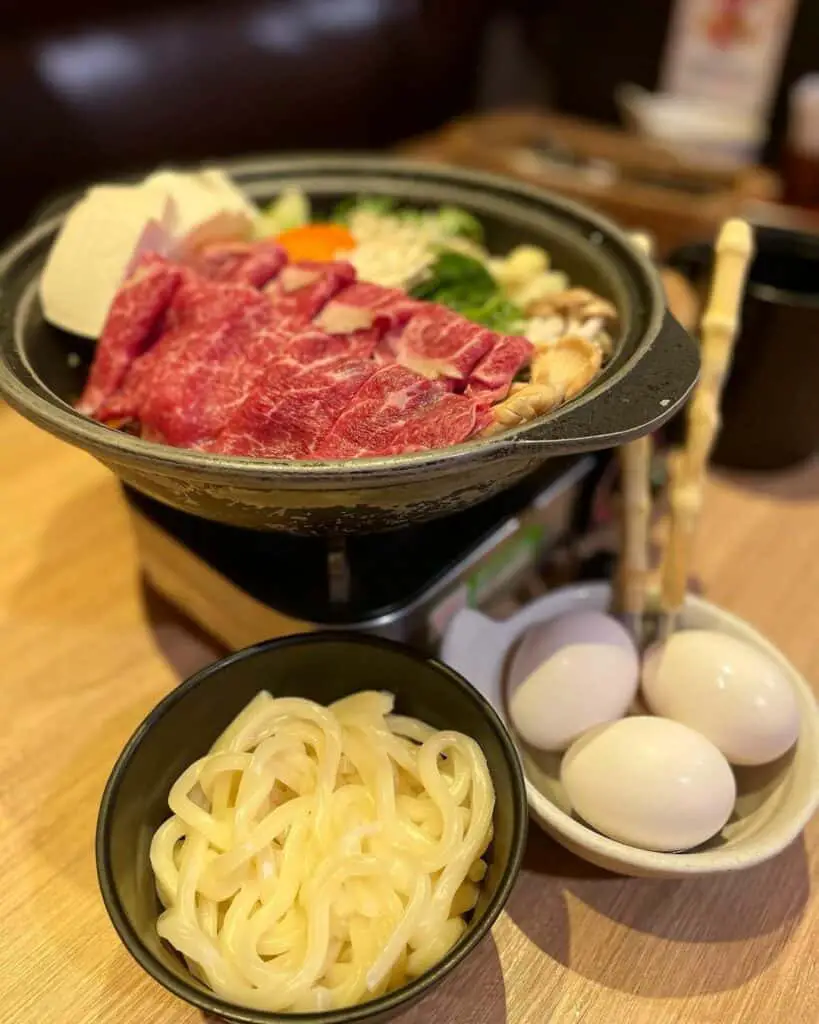
Sukiyaki is a brothy nabemono dish that’s made with a traditional broth, thin-sliced beef, cabbage, mushrooms, and other local harvests. Pho is quite similar but utilizes rice noodles instead of udon noodles. Pho also may have egg or spicy Vietnamese chile added in for flavor.
The udon noodles are noticeably a bit bland. Udon is made with very simple ingredients, following an age-old recipe utilizing wheat flour, salt, and water. The resulting noodles are relatively plain tasting. Therefore, the main goal of an udon noodle is to soak up the flavor from the broth that it’s been soaking in. Udon, by itself, isn’t very flavorful. However, udon noodles in a good broth are some of the best noodles you’ll ever have!
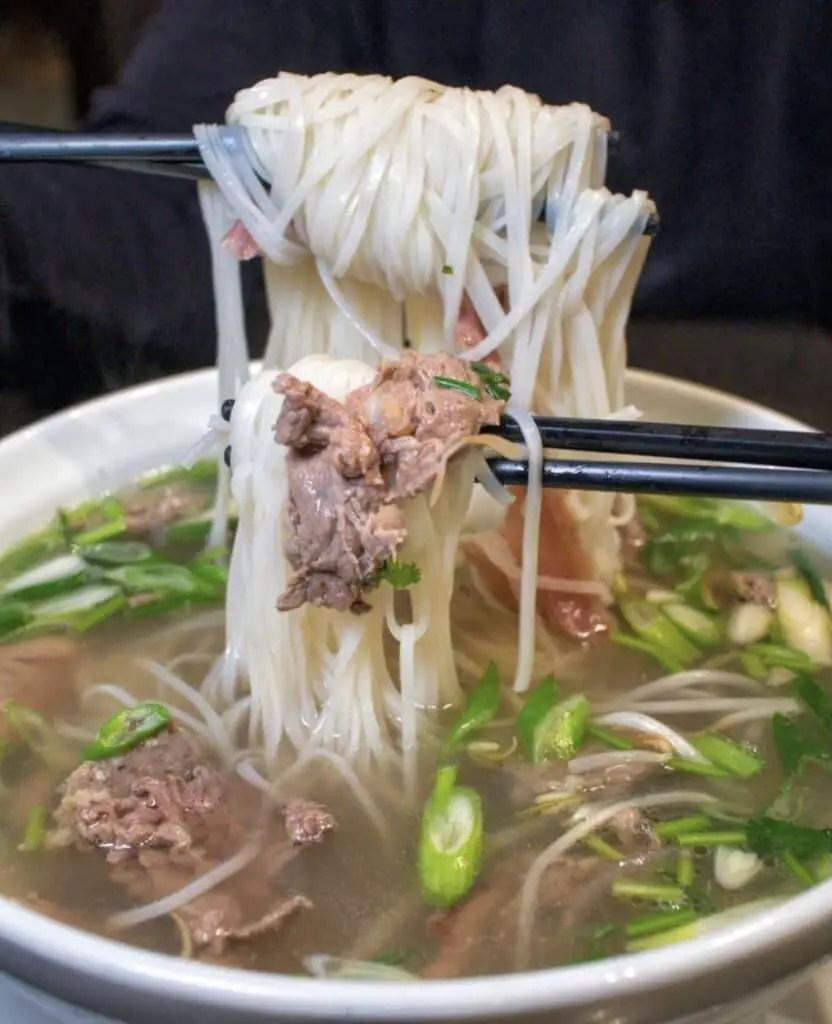
Vietnamese rice noodles (often called vermicelli) have a somewhat light flavor. White rice is typically used to make rice noodles. If you’ve ever used rice flour to cook with before, then you’ll remember that it’s not quite as heavy as traditional wheat flour.
Differences In Texture
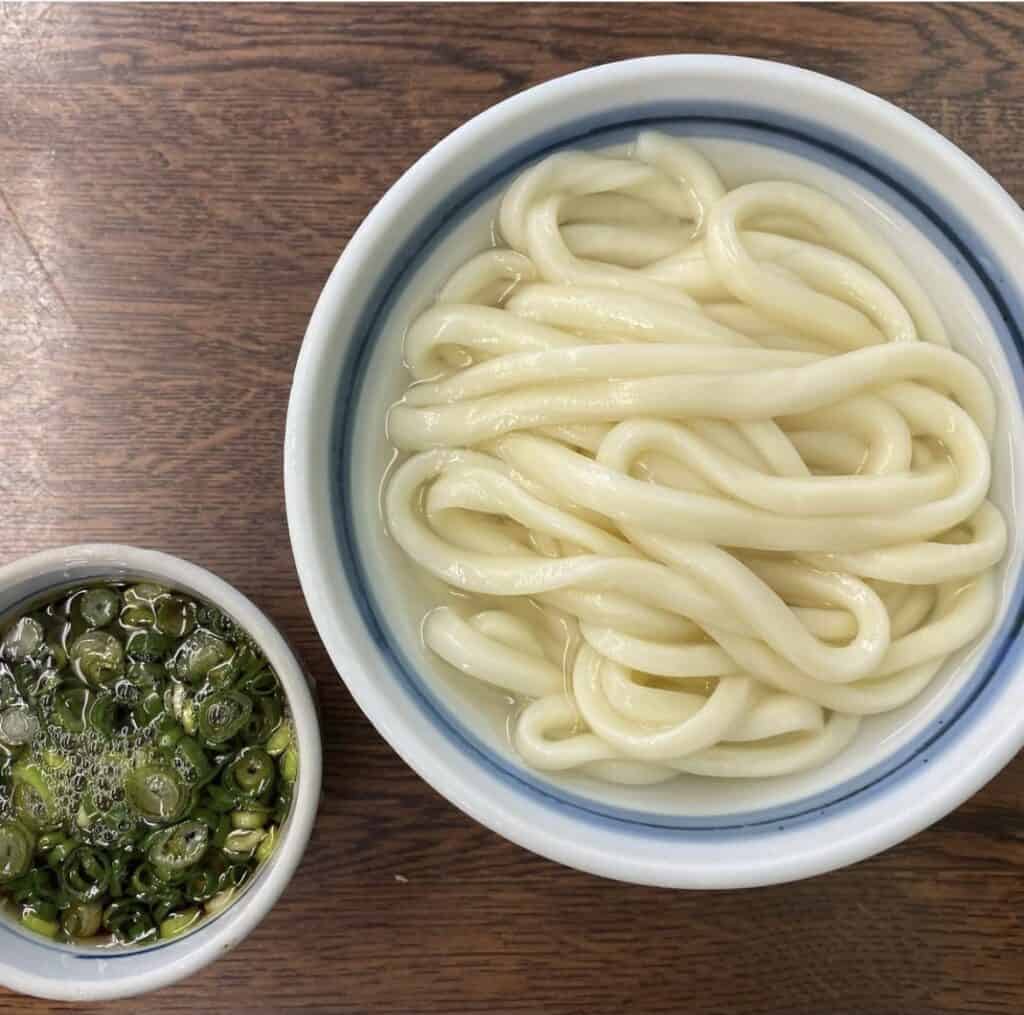
Another key difference between the two dishes lies within the texture of the two dishes. Udon noodles are cut very thick. In fact, udon noodles are the thickest noodles made in the world. As we mentioned, these extra-thick noodles are designed to soak up the flavor from whatever broth they’re cooked in. This means that the noodles tend to be a bit juicier and softer. Udon noodles are known for being chewy noodles that require almost as much chewing as the other ingredients in the dish.
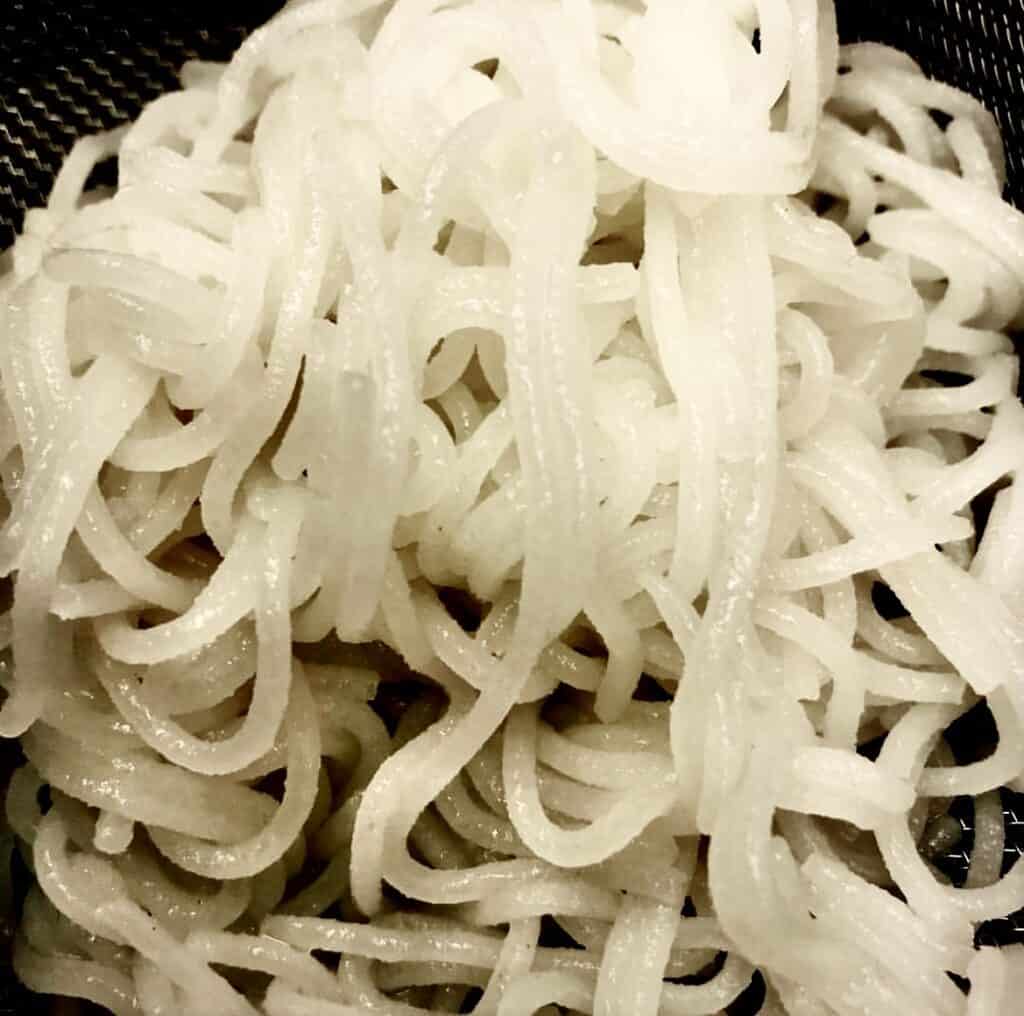
Rice noodles, on the other hand, are a lot thinner (and usually longer). While they do absorb some flavor from the broth, their firmness means that they tend to have a more mild flavor. They’re also not quite as chewy, which ultimately means that they’re not quite as filling. This is also because rice noodles contain more simple carbohydrates (with their white rice flour base) compared to udon noodles (which are made with a whole wheat flour base, containing more complex carbs).
Why Would Somebody Prefer Rice Noodles?
The main reason why somebody might prefer rice noodles over udon noodles is that they’re 100% gluten-free. Since udon noodles are traditionally made with whole wheat flour, they have lots of gluten. For those with celiacs disease (gluten sensitivity), consuming too much gluten can lead to bloating or irritable bowels.
Rice noodles allow those with gluten sensitivities to enjoy popular Asian dishes without having to ditch the noodles. Some eaters also prefer the longer, thinner strands of pasta and the smooth, light taste provided by rice noodles in addition to their gluten-free nature.